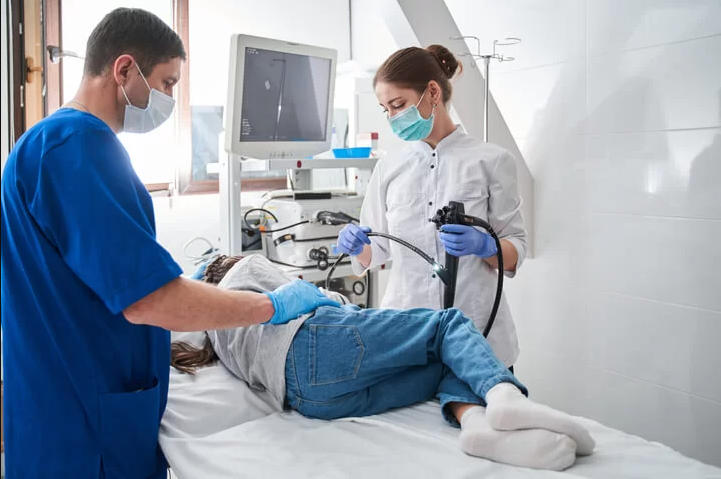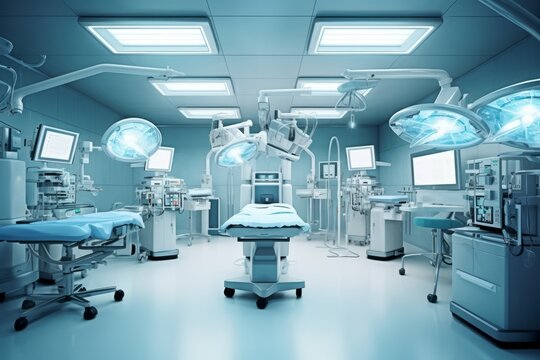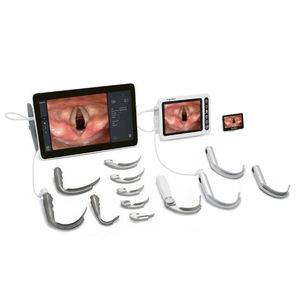Table of Contents
Hospitals today rely on innovative endoscopy solutions to improve clinical outcomes, streamline procedures, and meet the demands of modern patient care. ODM endoscope systems provide customized, hospital-grade devices that combine high-definition imaging, ergonomic design, and flexible procurement options, supporting both routine diagnostics and specialized surgical workflows.
Hospitals are integrating ODM endoscope technology to enhance diagnostic precision and procedural efficiency. These systems are designed to adapt to specific departmental needs, including gastroenterology, urology, respiratory care, and surgical imaging.
Improved clinical efficiency and reduced procedure times
Department-specific customization for gastroenterology, urology, and surgery
Reliable imaging performance for enhanced patient outcomes
Integration with hospital digital systems for seamless workflow
Tailored specifications such as insertion tube size, imaging resolution, and ergonomic design
Multi-department coverage reduces reliance on multiple suppliers
Cost-effective solutions that align with hospital budgets
Streamlined procurement processes through partnerships with a single ODM manufacturer
Customized ODM endoscopes provide procurement teams with flexibility to match departmental requirements, optimize budgets, and simplify vendor management, enhancing overall hospital operations.
Chip-on-tip sensors for detailed visualization
Optimized light sources for improved clarity
Digital integration for storage and cross-departmental sharing
Enhanced collaboration for more accurate diagnostics
These technologies allow physicians to perform faster, more precise procedures while hospitals maintain consistent quality across clinical workflows.
Improved navigation of internal anatomy
Specialized designs for pediatric and sensitive cases
Durable construction for repeated sterilization
Compatibility with robotic-assisted surgery systems
By enabling surgical precision, ODM endoscopes contribute to reduced patient trauma, shorter recovery times, and higher overall procedure efficiency.
Standardized devices simplify staff training and maintenance
Reliable supply ensures consistency for multi-site hospitals
Compliance with international medical standards
Durable construction for long-term clinical use
Hospital-grade ODM endoscopes ensure procurement teams receive consistent, high-quality devices that maintain operational efficiency and meet clinical demands across departments.
AI-assisted diagnostics for early condition detection
Digital integration for remote consultations and data sharing
Real-time 3D imaging for enhanced procedural accuracy
Systems designed to improve efficiency and patient safety
Hospitals adopting these innovative endoscopy solutions are better equipped to deliver fast, precise, and safe patient care, while optimizing staff performance and workflow.
Artificial intelligence enhancing real-time diagnostics
Robotics integration for complex surgical procedures
Advanced 3D visualization for intricate operations
Scalable solutions to meet growing demand for minimally invasive care
Smart ODM endoscope systems are poised to redefine hospital workflows and patient care standards. Partnering with a trusted supplier such as XBX ensures access to high-quality, hospital-ready endoscopes tailored for modern healthcare needs.
ODM Endoscope technology is being applied across an expanding array of clinical specialties. Beyond routine gastroenterology and respiratory care, hospitals now deploy tailored devices for hepatology, interventional pulmonology, urology, gynecology, otolaryngology, and complex surgical imaging. The advantage of an ODM approach lies in precise specification control—outer diameter, working length, bending angle, channel configuration, and sensor-lens pairing—so the device aligns with the case-mix and workflow of each department.
In upper and lower GI, ODM Endoscope configurations support high-contrast visualization for early lesion recognition, polypectomy, EMR/ESD, and biliary interventions. Adjustable depth of field and antireflective optics improve the view of subtle mucosal patterns, while enhanced irrigation channels support clear fields under active bleeding.
Optimized optics for flat lesion detection and vascular pattern clarity
Channel geometry matched to accessory use in EMR/ESD and ERCP
Slim variants for stenotic segments and post-surgical anatomy
Interventional bronchoscopy benefits from ultra-maneuverable ODM Endoscope designs with chip-on-tip sensors and responsive distal angulation. Combined with fluorescence or narrow-band modalities, physicians navigate peripheral airways and sample small nodules with higher confidence.
Extended working length for subsegmental access and guided biopsy
Seamless integration with navigation systems and radial probes
Reinforced reprocessing durability for high-throughput ICUs
ODM Endoscope customization emphasizes atraumatic insertion, irrigation efficiency, and stone management support in urology, and precise visualization of endometrial and tubal structures in gynecology. Ergonomic grips reduce operator fatigue during longer cases.
Hydrophilic coatings and tapered tips for gentle access
Balanced stiffness for fine control without kinking
Irrigation flow tuned to preserve visibility and thermal safety
In ENT clinics and ORs, slender ODM Endoscope builds with high pixel density and wide FOV assist in delicate procedures. Enhanced depth cues improve orientation in narrow corridors such as the sinus or middle ear.
High-resolution sensors for microanatomy and ossicular chain assessment
Short working distance imaging with edge-to-edge sharpness
Fine angulation for anterior skull base access
For pediatrics, ODM Endoscope variants prioritize small diameters, soft shaft profiles, and tip flexibility to minimize trauma. Handle geometry and tactile feedback are tuned for clinicians with different hand sizes.
Pediatric-specific diameters and gentle bending sections
Reduced insertion force and improved shear tolerance
Accessory compatibility without compromising profile
Fluorescence guidance and multispectral modes are increasingly requested. ODM Endoscope platforms pair these modalities with stable illumination and low-noise sensors so early tumor signatures remain visible under real-world conditions.
Fluorescence-capable optics with uniform excitation
Noise-managed sensors for low-light performance
Data capture mapped to hospital PACS/VNA for longitudinal tracking
Successful adoption depends on upskilling clinicians, nurses, and reprocessing teams. ODM partners co-create curricula that reflect the hospital’s case mix, staffing model, and accreditation requirements. Clear role delineation reduces onboarding time and elevates consistency across shifts and sites.
Training modules differ for attending physicians, fellows, nurses, and sterile processing technicians. Simulation-first pathways reduce learning curves and standardize technique.
Physician tracks: device control, image optimization, therapeutic workflows
Nursing tracks: patient prep, intra-procedure coordination, documentation
Reprocessing tracks: leak testing, detergents, drying, storage, traceability
VR/AR simulators and bench models reinforce scope handling and complication management. AI-assisted scoring provides objective feedback and identifies skill gaps for targeted coaching.
Scenario libraries aligned with local protocols
Performance dashboards for individuals and teams
Periodic recertification pathways and micro-learning refreshers
When multiple generations of devices coexist, structured change management prevents disruption. Super-users and champions facilitate peer training and sustain best practices.
Go-live playbooks and elbow support during initial weeks
Feedback loops to refine settings and accessory bundles
Joint audits to elevate safety and throughput
Hospitals are aligning procurement with environmental goals. ODM Endoscope programs weave eco-design into materials, energy use, reprocessing chemistry, packaging, and end-of-life planning.
Design choices reduce environmental load without compromising clinical performance. LED illumination and efficient drivers cut power use while preserving color fidelity.
Modular components to replace parts, not whole devices
Low-impact polymers and recyclable packaging
Durability targets tied to reprocessing cycles
ODM Endoscope coatings and channel geometries are tuned to clean effectively with fewer chemicals and shorter cycles, reducing water and energy consumption.
Channel smoothness for residue shedding
Validated detergents with lower toxicity profiles
Drying efficiency to prevent biofilm and corrosion
Lifecycle planning includes repair, refurbishment, and responsible recycling. Traceability supports accurate reporting of carbon and waste metrics.
Service exchanges to keep cases running during repairs
Refurb paths for secondary sites and teaching labs
End-of-life material recovery and documentation
Digital capability turns an ODM Endoscope from a standalone device into a node within the hospital’s data fabric. Interoperability ensures images and video follow the patient across departments and campuses.
Standards-based connectivity streamlines archival, review, and multidisciplinary care. Imaging parameters can be templated to improve consistency across operators.
PACS/VNA integration for longitudinal imaging records
Structured metadata for analytics and quality programs
EHR links for order sets, reports, and charge capture
Secure streaming supports real-time collaboration. Remote proctoring expands access to expertise in resource-limited settings.
Low-latency video for intra-procedure consultation
Asynchronous case review and second opinions
Device telemetry for remote troubleshooting
Data privacy and cybersecurity are essential. ODM Endoscope platforms align with hospital governance to protect PHI while enabling innovation.
Encryption in transit and at rest
Role-based access and audit trails
Patch cadence and vulnerability management
Procurement strategies are shifting as hospitals balance capability, cost, and resilience. ODM Endoscope portfolios allow a single partner to cover multiple specialties with consistent training and service models.
High-volume centers emphasize advanced features and uptime guarantees, while emerging markets prioritize cost-predictable bundles and training-heavy onboarding.
Tiered feature sets matched to acuity and volume
Service-inclusive pricing and extended warranties
Accessory standardization to reduce SKUs
Conformity with international standards eases cross-border deployments. Diligent documentation accelerates internal approvals and external audits.
Alignment with recognized safety and quality benchmarks
Traceable lot records and UDI labeling
Multi-site training and competency records
ODM models can diversify manufacturing and service footprints to buffer disruptions. Inventory and loaner programs protect elective and urgent case schedules.
Dual-source critical components
Buffer stock and rapid swap devices
Predictive maintenance and spare kits
The next wave of innovation blends AI, robotics, advanced visualization, and personalization. ODM Endoscope platforms will act as software-defined systems that improve over time through validated updates.
AI engines highlight suspicious areas, quantify mucosal patterns, and suggest standardized capture protocols. Decision support reduces variability and supports earlier detection.
Real-time overlays that remain unobtrusive
Post-procedure analytics for quality assurance
Continuous learning within governed datasets
Robotic-assisted control improves stability in fine dissections and reduces operator fatigue during long cases. Haptic cues and safety interlocks elevate confidence.
Micro-motion control for delicate maneuvers
Collision avoidance and field preservation
Ergonomic consoles for long sessions
Three-dimensional perception and AR guidance aid navigation in complex anatomy. Patient-specific presets tailor imaging and ergonomics to anticipated challenges.
Depth cues without compromising frame rate
Anatomy-aware overlays for consistent orientation
Profiles for pediatrics, bariatrics, and post-surgical anatomy
As hospitals continue to align technology with clinical goals, ODM Endoscope solutions will anchor minimally invasive pathways with safer procedures, clearer images, and more efficient teams, while preserving flexibility for future advances.
Copyright © 2025.Geekvalue All rights reserved.Technical Support:TiaoQingCMS